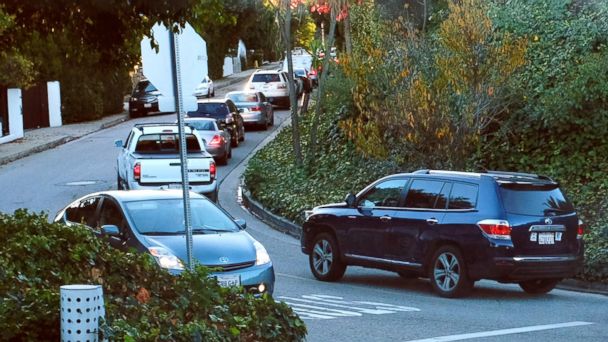LA Neighborhood Blames Waze App for Morning Traffic Jams
LOS ANGELES-Thanks to its pervasive use by drivers seeking a clear patch of road, the Waze traffic social app is being blamed for causing congestion in a once-quiet LA neighborhood.
Paula Hamilton, 80, who has lived at her home in Sherman Oaks for 35 years, told ABC News that morning traffic on her street took a turn for the worse two to three months ago.
"The traffic has never been this bad. It's bumper-to-bumper traffic now in the morning. Cars move at 10 miles an hour." Hamilton says the congestion is so bad she won't leave home from 6:45 a.m. to 8 a.m.
Mila Reeder, who lives five doors down the road from Hamilton, agrees that in the 30 years she has lived in her Sherman Oaks home, traffic has never been this heavy.
"There are no sidewalks on the narrow curvy streets near my home and with the number of cars driving by in the morning people are always about to be hit. It's really dangerous," Reeder told ABC News.

Early morning rush hour traffic winds its way along a narrow street in the Sherman Oaks section of Los Angeles, Dec. 9, 2014. Richard Vogel/AP Photo
While complaints are being leveled at Waze for diverting freeway traffic to residential neighborhoods, Bruce Gillman, public information officer for the Los Angeles Department of Transportation, tells ABC News that it's unfair to place all the blame on Waze.
"There is more than one traffic app out there and they all have similar functions," said Gillman.
These apps give real-time traffic data to motorists by tracking the speed of those using the apps, then suggesting alternate routes, sometimes through residential areas.
Gillman, who said he uses traffic apps, noted that neighborhood roads are not off limits. "Using these apps is a normal reaction. We try to navigate around traffic."
Julie Mossler, senior director of communications at Waze, tells ABC News that the allegations that Waze is causing neighborhood traffic in Los Angeles started around Thanksgiving this year.
"Waze draws the most attention because we have 50 million users worldwide. However, to say we're causing bumper to bumper traffic is not accurate. This isn't how the algorithm of Waze takes care of itself."
Mossler explained in a note to residents how the app works.
"Waze finds open stretches of road and spreads cars across the grid of public streets, helping not only to alleviate congestion but promote a safer drive, as bumper-to-bumper traffic often means a greater risk of accidents and unsafe driving behavior. We have millions of drivers in Los Angeles who work together to warn each other about objects in the road, construction and more. In turn, avoiding these obstacles prevents further issues."
"Also, I want to stress that we alternate which routes are used, based on real-time conditions, to avoid generating congestion of our own on a different set of roads-it simply wouldn't be effective to route a large amount of Wazers down your street," said Mossler in her note.
Mossler said in her letter that "Los Angeles is a powder keg of cars, construction and population that will only continue to get worse. With or without Waze, drivers will be looking for alternatives to major thoroughfares."
Mossler tells ABC News that Waze operates on a massive scale by helping to spread cars out. "By doing that it certainly makes it easier for emergency vehicles to get through and improved your commute to the airport, for example."
Sherman Oaks residents have raised their complaints to their council member, Tom LaBonge.
"My field deputy met with them so we can find a solution to their problem. The collector streets in Los Angeles recommended by apps like Waze as alternate routes are not equipped to handle this amount of heavy traffic. Some of them are narrow, some are not properly divided, and some are unmarked for example," LaBonge told ABC News.
LaBonge is working on a motion for the City Council addressing the safety of these apps.